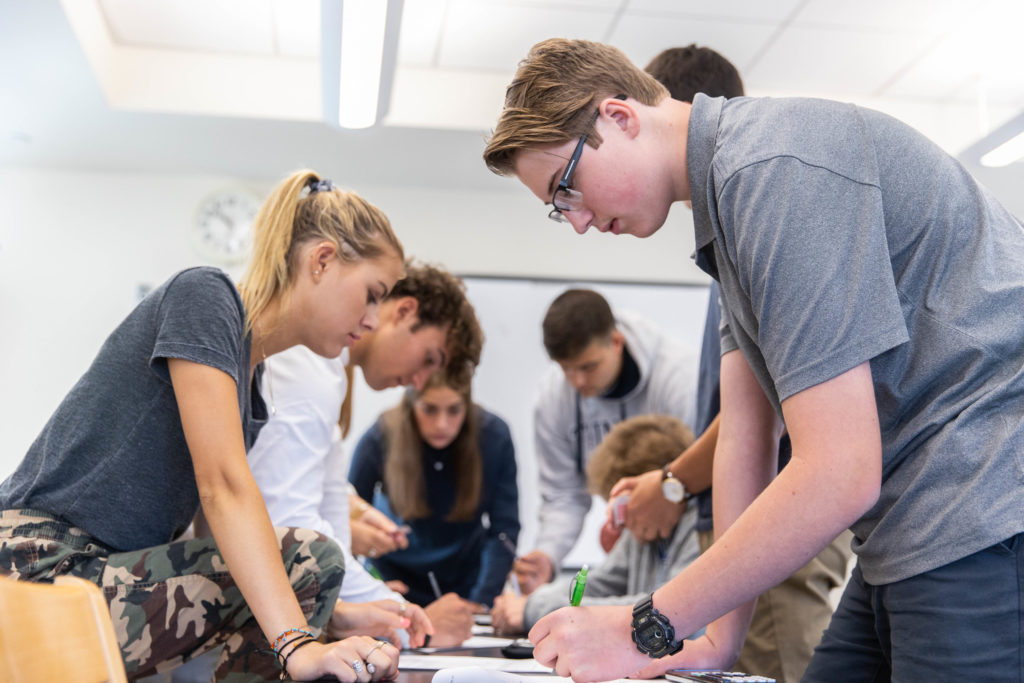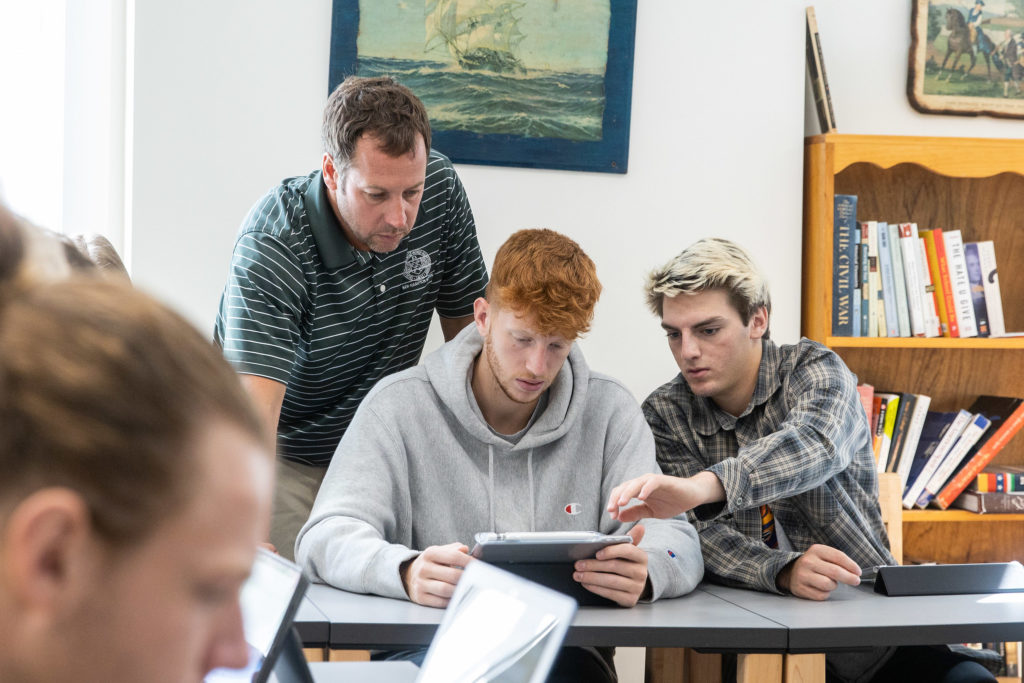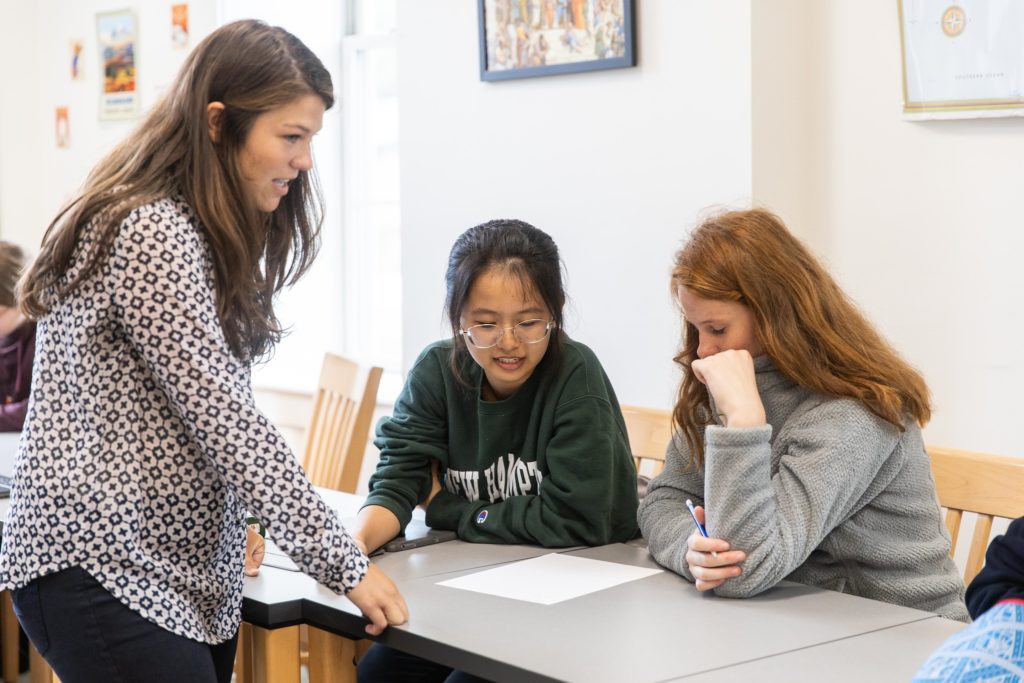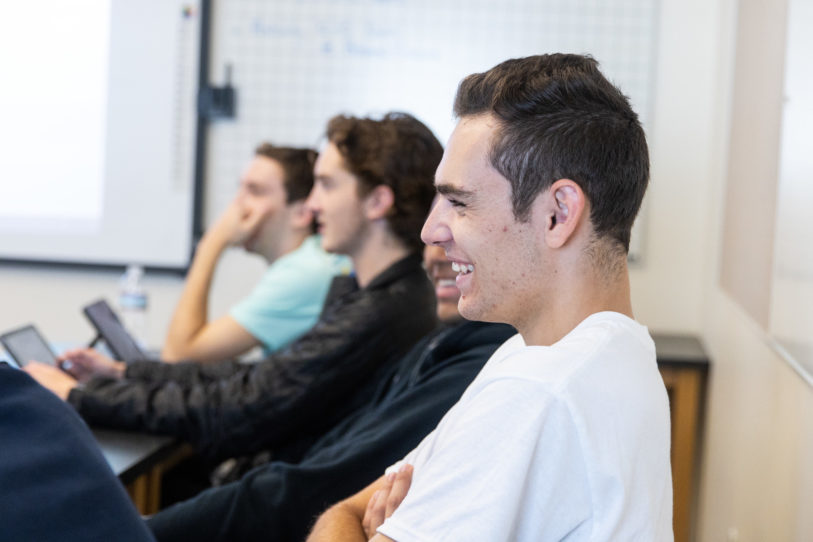We talk often about creating an inclusive environment on campus for our students. But how does that translate into the classroom? English faculty and New Hampton School alumnus Sam Conkling ’85 provided helpful tips at this week’s Faculty Meeting to ensure engaged and empowered youth through an inclusive classroom.

How is inclusivity being promoted at New Hampton?
On the heels of Convocation and other events kicking off a new school year, faculty and students are eager to start this year off on the right foot. Prior to the students’ arrival, several speakers engaged the faculty in thought-provoking discussions on how to create an inclusive campus where students are genuinely happy. Speaker Brooke Raney promoted universal youth needs and how to meet them with healthy relationship building so that every student has at least one trusted adult to confide in. She challenged faculty to set goals with students and not for them, asking questions instead of giving answers. And finally, she encouraged us to push students ever so slightly beyond where they thought they could go while promoting self-confidence.
As part of a diversity training workshop, speaker Lawrence Alexander urged us to “accept the challenge of addressing equality and inclusion, and combating racism”. He stated how important it is that everyone understands that this is “a lifelong commitment to self- evaluation, and self-critique – we are never finished learning: Be humble, flexible, bold enough to be self-critical and have the desire to learn more”.

How does this apply to the classroom?
Even with the small class sizes at New Hampton School, we must be intentional in order to create an immediate connection with students early on and ensure that all students feel like they have a voice. Conkling provided the following tips to faculty:
- Meet and greet students as they enter the classroom. Make eye contact and welcome them into the room.
- Be conscious of the body language that you display and be aware of those non-verbal cues from students as well as signs of insecurity or distress. This can give you a read on how everyone is feeling as they arrive for classes.
- Take a genuine interest in each student from day one. Be sure to learn student’s names and important information about them within the first week.
- Let your students get to know each other. Focus on what people have in common while encouraging individuality.
- Make students feel comfortable, safe and respected. Respect earns respect.
- Remember that we are all here to be our best selves.

Inclusivity now is a foundation for the year
As classes progress throughout this semester, academic rigor, busy schedules, and daily life will attempt to challenge the relationships between students and faculty. The classroom and learning experience is vital to our goals of inclusivity. Dedication to an inclusive classroom establishes a strong foundation that promotes strong student and faculty relationships as well as a safe, productive space for learning throughout the year.




